Back in 1977, when Richard Freeman bought his Shark Cat, Elvis Presley was still swinging his hips and Radial Tuned Suspension (RTS) had just found its way into the HZ Holden. Since then, Richard’s Cat has seen 31 pairs of outboards. He’s also bought a house and raised a family on the back of his fishing spoils – and still works whenever the weather lets him. The Captain climbed over the well-worn gunnels to hear Richard’s tale.
In 1977 I was a 26-year-old die maker for Queensland Gaskets. I’d been there for 10 years and decided it was time to cast my own die. I wanted to follow my love of the sea, spawned growing up at Caloundra’s Dicky Beach. My plan was to handline enough fish to pay my board, fuel the boat and my HR Holden ‑ and maybe have enough left over to buy new fishing gear.
Fishing methods were pretty basic back then: a wooden spool with fishing line and ganged hooks with a whole pilchard. A commercial license cost only $25 and that let you catch and sell almost anything that swam. I’d taken an interest in a powered catamaran being built at the Gold Coast by fisherman and power-boat racer Bruce Harris. These Shark Cats featured twin motors, self-draining floors, a soft ride and good stability at rest ‑ everything I was looking for in a work boat.
A MAN CALLED BRUCE
My father loved his lawn bowls and one of his best mates on the Caloundra greens was Olly Harris, Bruce’s dad. Phone numbers were exchanged and I gave him a call. “I’m interested in buying one of your 16ft Shark Cats”, I said hopefully. Bruce treated me like a long-lost friend. “Mate, you don’t want the 16-footer, I have a new 18-footer in the mould. I’ll give you a call when it’s ready and we’ll take it for its first spin”. A few months passed and Bruce called, inviting me down to the Gold Coast the very next day. I barely slept a wink, getting up early and dragging my good mate Jack McGrath with me for what would go down as the ride of our lives!
Jack had owned boats all his life, caressing a V17 Haines Hunter at the time. That hull had a great reputation as a sea boat; and probably still does! Bruce greeted us warmly. “She’s not quite ready yet. Come over to my place for some breakfast and by the time we get back she’ll be ready to go”.
After bacon and eggs with Bruce’s family we drove back to the factory where a gleaming new Shark Cat sat proudly on the trailer. Jack and I stood, mouths agape. She was big, beautiful and slab-sided. Bruce suggested we hook the trailer up to my HR Holden wagon. No problem, I was like a kid with new puppy. It would be a short trip, as Bruce’s home was on a canal with its own boat ramp.
HOLDEN HERO
My Holden had a three-speed manual transmission with an unsynchronised first gear. For the uninitiated, that meant you had to stop completely before slipping into first gear, unless you were adept at ‘double-clutching’, which involved depressing the clutch twice while revving the engine to match the first gear transmission speed. It was a process fraught with potential embarrassment. If you didn’t get it just right, there’d be a horrendous crunching of gears. Worst case scenario: you destroy the gearbox. I went for glory.
I came to an intersection; pressed hard on the pedal and brought the drum brakes to life. The Shark Cat and trailer impatiently shoved me from behind. But rather than coming to a complete stop I took a breath and with a shaky left leg doubled-clutched into first gear. I pulled it off seamlessly and Bruce was mightily impressed.
STEPPING ABOARD
I reversed the rig down a narrow drive way past Bruce’s house and down his boat ramp. Bruce climbed aboard and reversed the boat off the trailer, berthing alongside his pontoon. We stepped aboard, trying to hide our grins. Bruce gave us our first bit of Cat driving advice: “Always use your outside motor when manoeuvring at low speeds”. We hung on his every word. After all, when he wasn’t building boats, he was racing them. In fact, Bruce would win the Class 2 Offshore World title in 1980 in his 23ft Shark Cat.
Once clear of the canal, Bruce wasted no time in gunning the twin 75hp Johnsons. They were tricked-up Stinger models that revved higher and produced more power than the standard model. They sang as we enjoyed an armchair ride racing through the protected Broadwater towards the notorious Southport Bar. We rounded the southern tip of South Stradbroke Island (no rock walls back then) and turned north-east to follow the channel out to the outer bar.
SOUTH STRADBROKE SESSIONS
The run along South Stradbroke Island brought back fond childhood memories. As a teenager, I’d spend the night alone fishing this stretch of beach. I loved those nights; it seemed I was the only person left on Earth and I’d often make a campfire on the beach around midnight and throw a freshly caught fish on the coals. Once cooked, skin and scales would peel off leaving me with a meal fit for a king.
Bruce slowed to an idle, waking me from my daydream. We were nearing the outer bar and it was blowing a stiff south-easterly. Huge ocean swells pounded the entire length of the outer break. The waves ahead were standing up higher than the length of our boat – and you could hear them thundering as they crashed down, churning up the sand on the outer banks. Jack and I were standing up clinging on to the grab rails.
Heart racing, I said to Bruce, “We don’t have to go outside, mate”. Cool as a cucumber as he eyed the breakers, Bruce never said a word, just looking up with a glint in his eye and a wry grin. He spied a lull in the swells and opened up the Stingers. We bounded across some smaller unbroken swells on the outer sand bank then climbed up and over the next set of big swells, which completely blocked our view of the shore behind us. Once out in the open rough ocean, Bruce ran the Cat in every direction. Fast or slow, she performed brilliantly.
The boat has some unique design characteristics developed by Bruce. The hull has a high tunnel between sponsons (individual hulls) with the floor sitting well above the water level. The high floor position helps with self-draining and the air cavity also acts like a cushion; you can literally feel the air push out from under the hull when landing. Later models have a ‘wave breaker’ down the middle of the tunnel – designed to dissipate water. The two tapered sponsons leave a small footprint on the water – roughly half that of monohull. This helps with low-speed planing and fuel efficiency.
But low-speed and efficiency weren’t on Bruce’s mind this day!
SWELL CHASER
After some breakneck runs showcasing the Cat’s performance, we headed back toward the bar. Bruce slowed, allowing the largest of the swells to pass under us. I thought, he’s doing the correct thing here, following the largest swell in, waiting for it to break and then motoring through the white water ‑ but Bruce had other ideas. As the huge swell stood up, Bruce opened the throttles once again and the Cat clawed its way to the top of the wave. It felt like we were atop a lighthouse – a lighthouse about to plunge into the sea!
At the very moment I thought we were doomed, Bruce wrenched back on the throttles and stopped the boat completely. The wave broke with the boat suspended on its crest and we came down ever so gently amid the deafening roar of breaking surf. Bruce then turned the near-stationary boat side-on to the white water and the Shark Cat shuddered sideways in response to the broken, but still powerful waves.
Before we even had time to think “what now?” the throttles were wide-open again and we were racing through the churned-up broken water beside the outer banks. Bruce had somehow managed to tame a seaway that could wipe out a large fishing trawler.
When we got back to the calm Broadwater, Bruce offered me the wheel. I powered up to a lazy 18 knots, but for some reason, kept on accelerating. Confused, I turned back to see a grinning Bruce with his arm over the stern tickling the throttle cables. Yep, he was a powerboat racer through and through!
62 NOT OUT
Back at the factory, I placed an order for an 18ft Shark Cat. A short time later, Jack ordered one as well. Almost 40 years later, I’m on to my 31st pair of outboards – a pair of Yamaha 80HP 4-strokes. I calculated I’ve circumnavigated the globe almost a dozen times. The little boat has weathered everything Mother Nature could dish out – all while funding our one-income family, including paying off the house and sending my daughters to university. I promised my good wife Beverley (who appreciates what the battle-weary Shark Cat has provided) that this would be my last set of engines. She could be waiting a while because they’re my favourite pair yet!
MEMORABLE MOMENTS AT SEA: SHARKS LIKE SHIPS!
I see sharks almost every day. One day fishing for snapper on the 50-fathom line off Caloundra. I’d hooked a fish of around 5.4kg when a 4.3m tiger shark decided it wanted dinner. I lay back on the handline as hard as I dared and managed to beat the tiger to the side of the boat. The big shark spun around and took its revenge by attacking one of my outboards. With the whole leg of the motor in its jaws, it thrashed on the surface trying to dislodge it, only giving up when I hit it with a fishing rod. As long as I owned that outboard, the teeth marks and scratches were a visual reminder of that tiger shark encounter.
Another morning I was shooting away the last of my spanner crab dillies. To set the gear I set my speed at about five knots and the boat on autopilot. While the main line went over the stern I clipped on the crab dillies about 30 fathoms apart. I set four lines, which we call a ‘full shot’, with around 11 dillies on each string. I was setting the last line of my first shot just before sun-up when I noticed a very large shape slowly coming into view then following the boat on my port side. I was trying to figure out what it could be because it was wider than my boat. I decided it had to be a manta ray because nothing else could be that wide. I clipped another dilly on to the main line and tried to focus on the dark shape emerging from the depths; by now quite close to the stern. It was the biggest great white I’d ever seen; longer and wider than the boat, with the unmistakable triangular pointed head of a white; much larger than the star of Jaws! Just as I thought, “it can’t be a shark, it has to be a whale”, it slowly peeled away and gently disappeared into the depths.
MEMORABLE MOMENTS AT SEA: WILD WEATHER
Electrical storms are one of my pet hates. I’ve had lightning strike within a mile and it was the scariest experience of my life. On one occasion I was tucked in the cabin (big enough to hold a double mattress), the rain was bucketing down and I could hear a hissing sound. I’ve come to learn this sound is a prelude to deafening thunder and lightning. On another occasion the radio started wailing loudly and the aerial hissed while sparks flew from the top. I disconnected the aerial, but the sparks still flew. To this day, I’m not 100 per cent sure what the cause was.
Another day I was catching good snapper and pearl perch off Caloundra when a big storm approached from the south-west. This is my most feared weather pattern ‑ deceivingly calm from shore, south-westerlies cause short, steep waves that are often unpredicted by forecasters. Many a fishing boat or trawler has had its front windows punched out while battling south-westerlies back to Mooloolaba.
I left my run home too late and before long I was nosing into the eye of the storm. The wind hit me on the port bow and I was doing 11 knots even though I had enough revs on the motors to travel double that speed. I looked back at the motors and was amazed to see they were on full lock to port even though the boat was travelling straight ahead. Green waves were coming over the windscreen, breaking in the boat, leaving the outboards blanketed in whitewater. The breaking water caused both motors to lose grip and I’d have to throttle back to an idle to allow the propellers to get a fresh grip in the water then quickly power up the face of the next wave. The boat was brilliant, the draining deck and scuppers dealing with the large volume of water. In fact, I think the boat handled the maelstrom better than I did! Some boats didn’t fare so well. More than 100 sailboats capsized that day, with the local lighthouse recording gusts up to 70 knots.
MEMORABLE MOMENTS AT SEA: DOLPHIN DELIGHT
Dolphins are marvelous creatures, spending hours playing games and just having fun. Even at night, dolphins will streak past the boat leaving trails of bubbly, bio-luminescent green light hundreds of metres long. Their timing and skill always amazes me as they miss the boat by millimetres, every time.
Many years ago a lone old dolphin appeared beside the boat, seemingly unwell. I gave him my old bait and he seemed most grateful. I would cross paths with Old Man Dolphin several times a year. He’d lie beside the boat and splash me with water to get my attention. One day he showed up with a calf and I realized he was a she. Old Girl proudly nudged her baby over to show me, which made me feel very privileged. I named her Dolly and over the years I watched her grow to an adult.
One day several bull sharks were following me when Old Girl showed up and took up position. I was worried the sharks would attack her. Two sharks charged in at lightning speed, the attack appearing to catch Old Girl off-guard. There was a big commotion beside the boat and then the sharks retreated, Old Girl hot on their tails. About 20m from the boat, Old Girl caught up with the sharks, biffing one of them clean out of the water. She returned, raised her head out of the water and laughed. No bull shark was going to boss her around. If I’m line fishing and my fish falls off the hook and floats away in the current, Dolly will retrieve it and give it back to me, balancing it on her forehead.
Old Girl had another trick up her sleeve. Whenever the sharks came into view, she would somehow create concussion-ring ‘bubble bombs’, which would explode like little depth charges. I could feel and hear them through the hull. When these bubble bombs surfaced they would produce a large crater in the water, and the sharks always cleared off.
CAT WITH 9 LIVES
Tony Spiteri from DNA Fiberglass is building a boat based on the 18ft Shark Cat. Known as the AB-CAT, the mould was designed along the lines of Shark Cat owned by abalone diver from Eden. Erick Hyland (co-founder of Edencraft and builder of Whitepointer fibreglass boats) built the mould, which has the distinguishing feature of a NZ abalone shell cast into the forward hatch. Contact Tony on 0407 827 809 if you’re interested in a boat that just might give you 40 years of distinguished service.

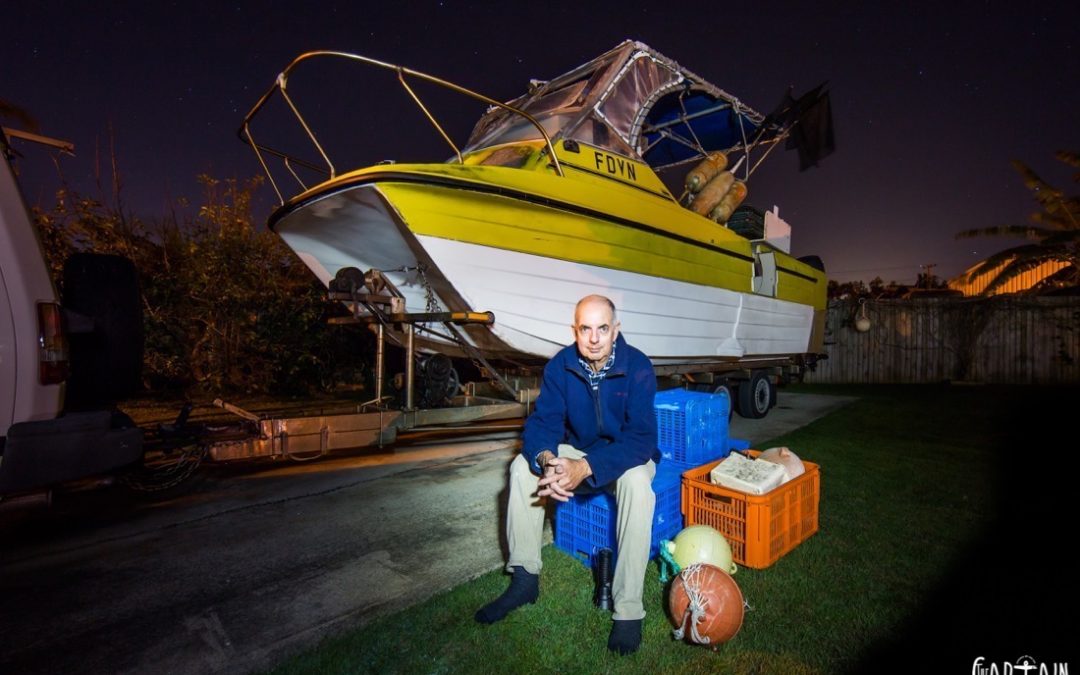
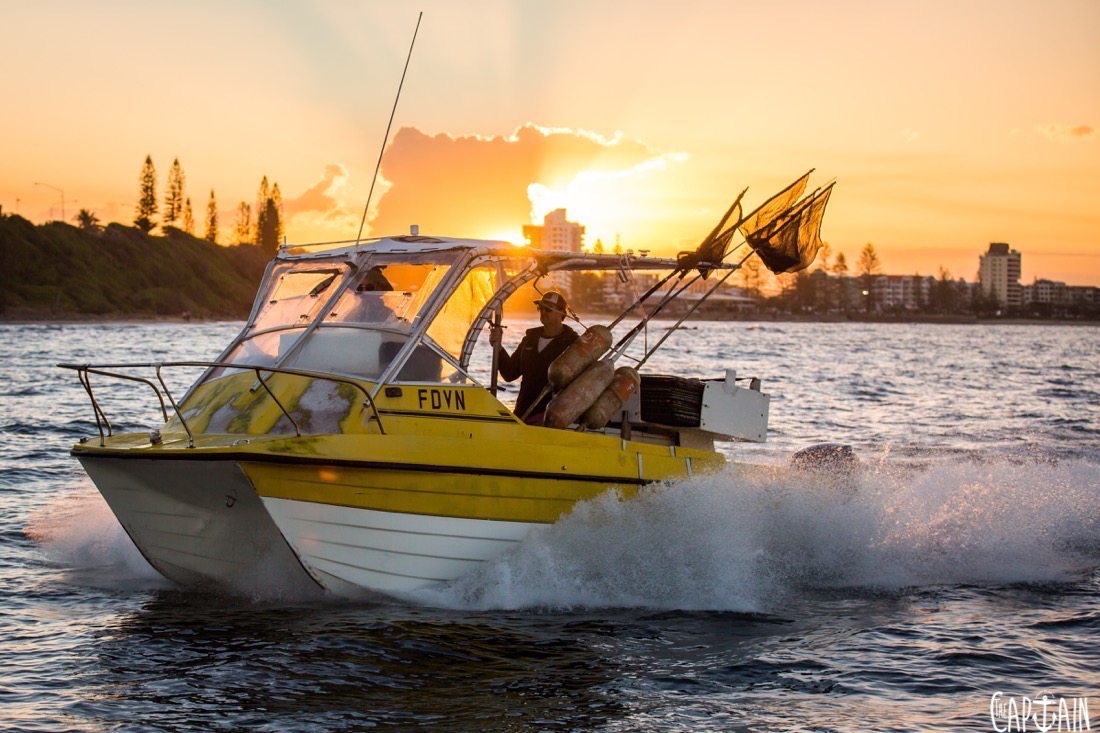
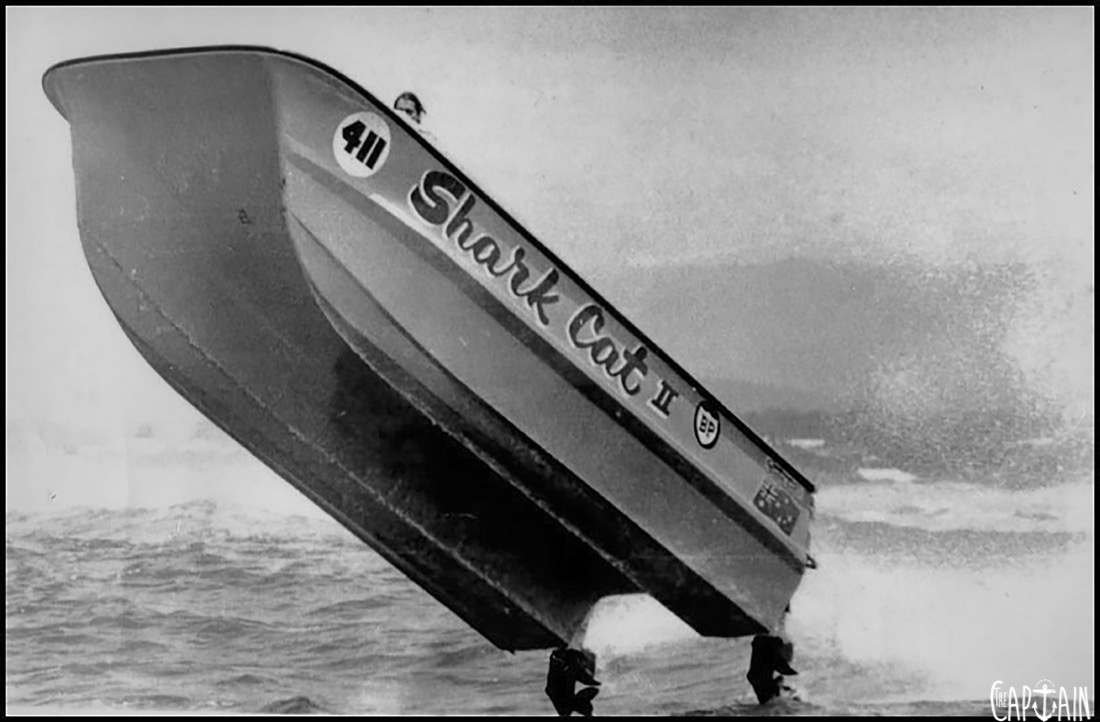
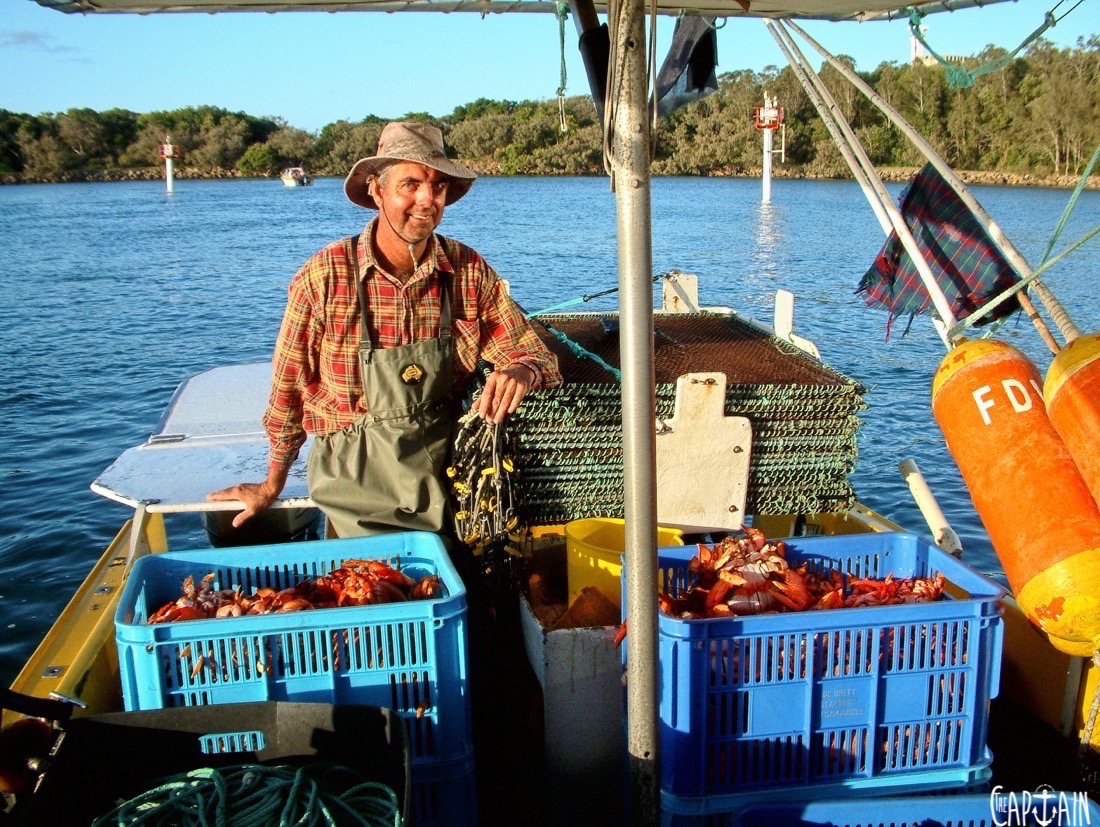
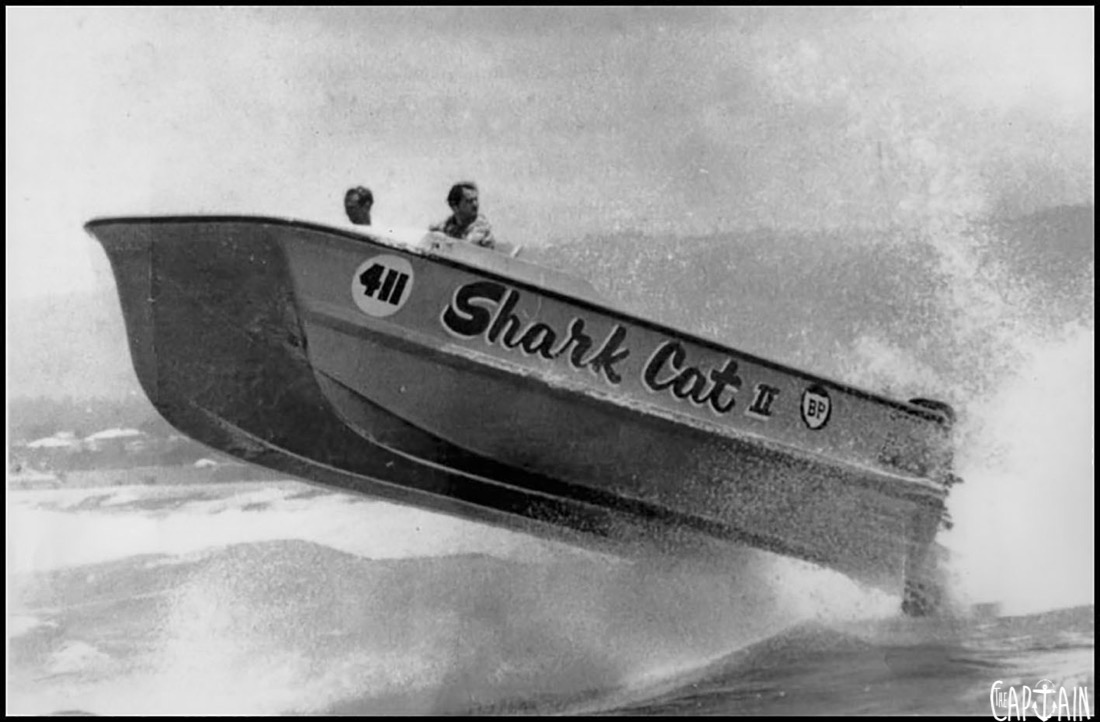
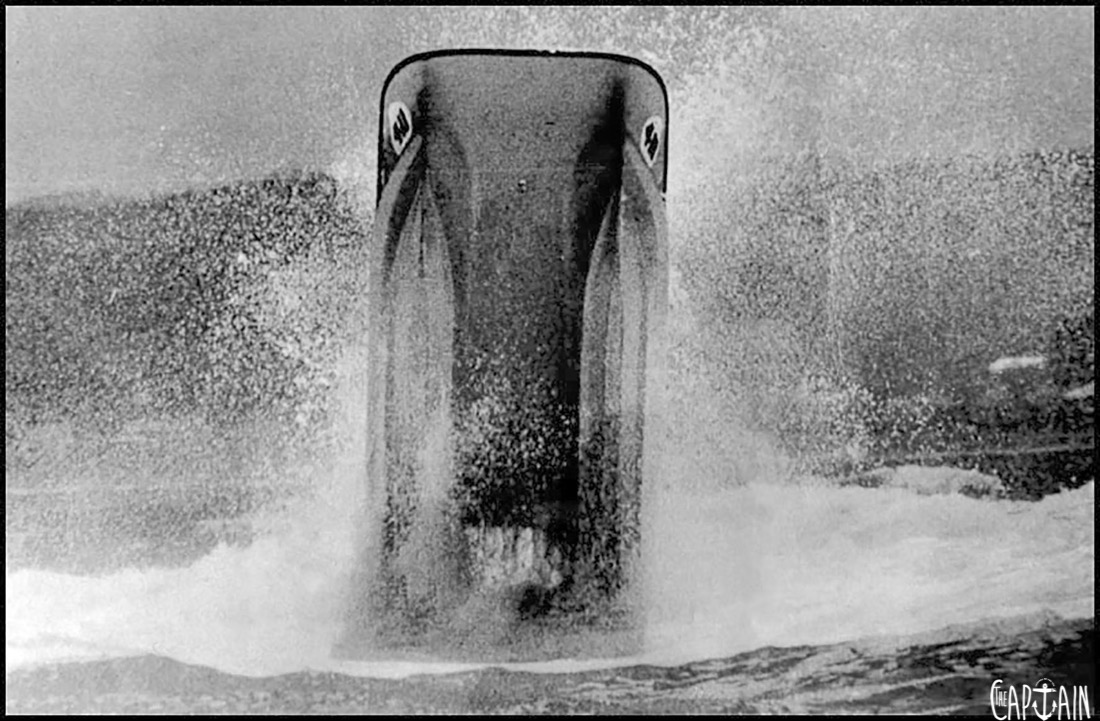
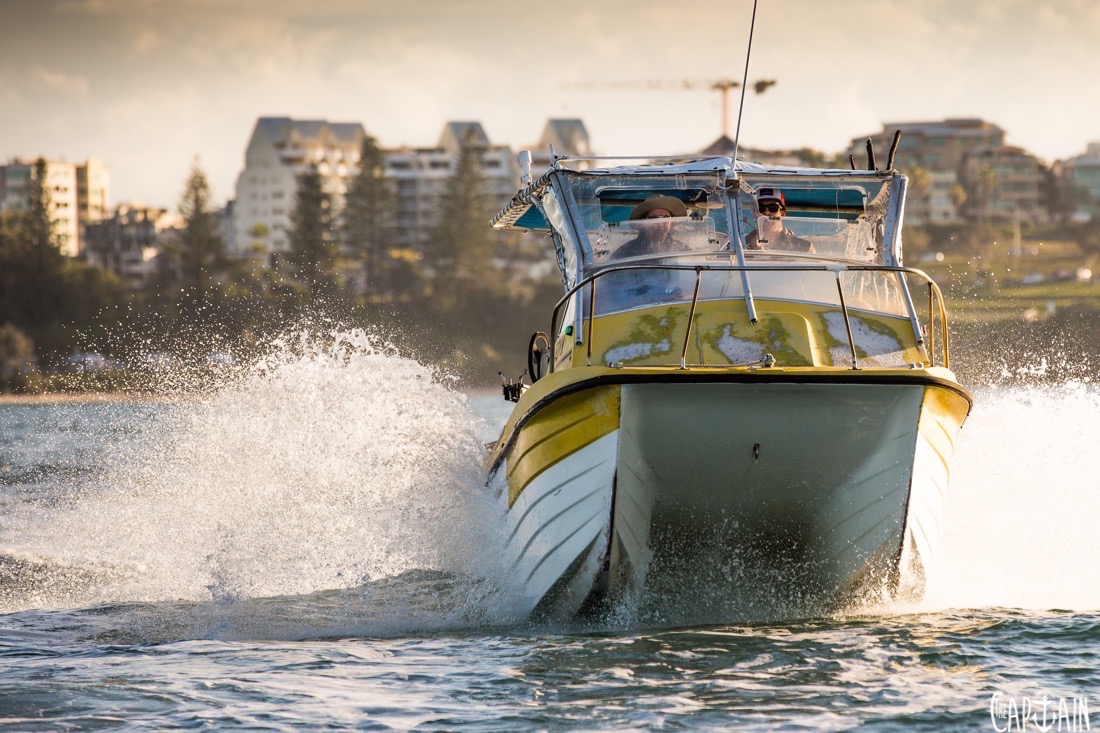
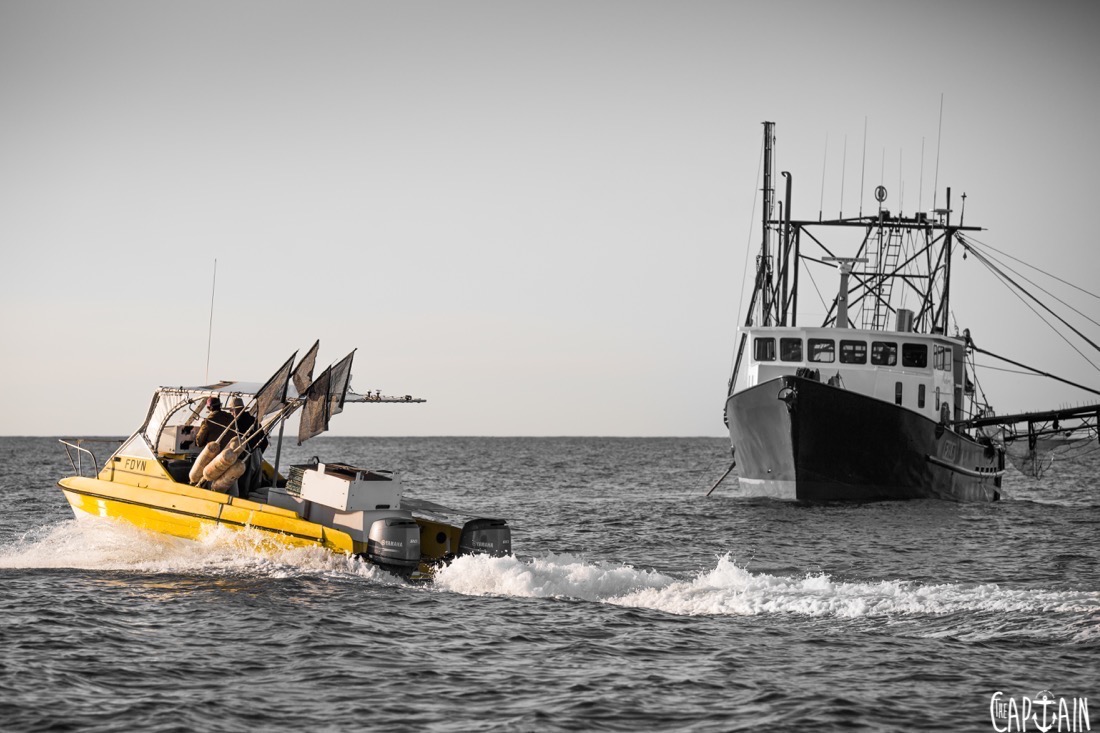
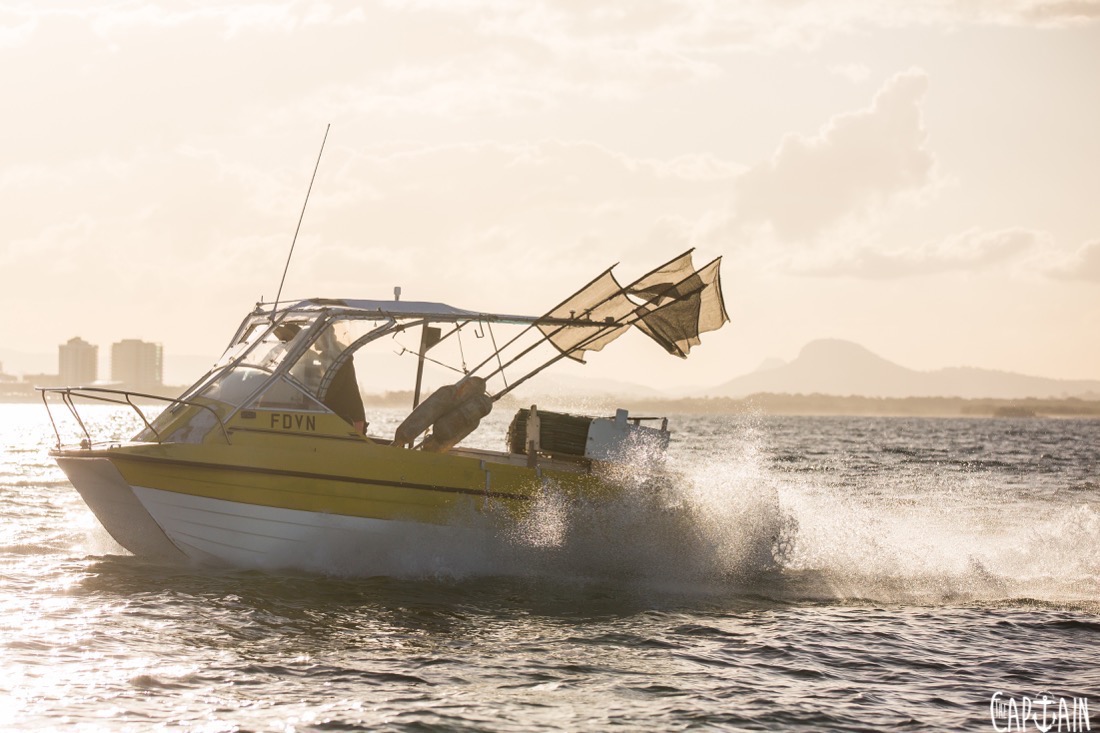
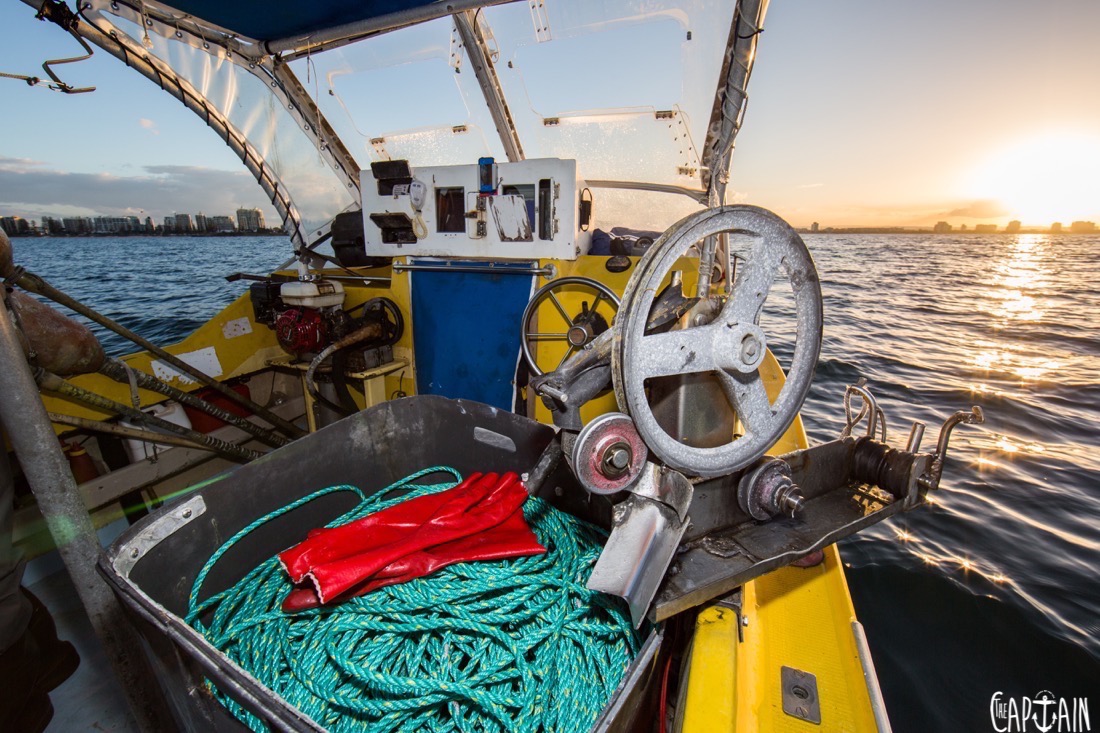
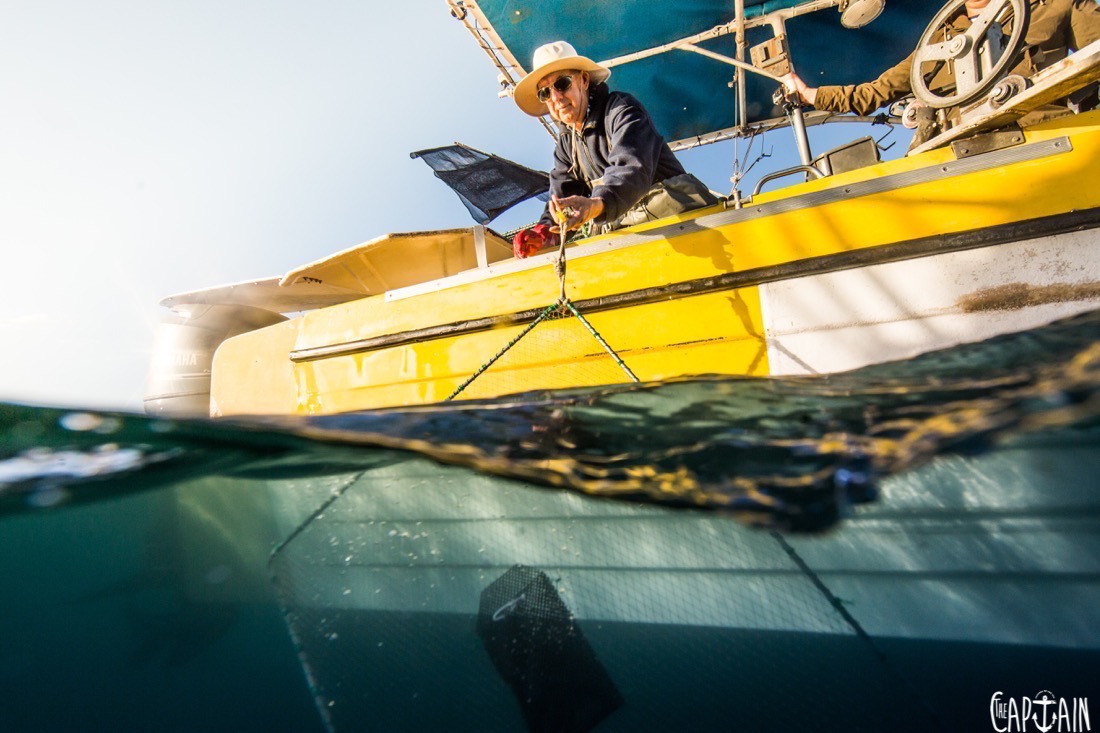
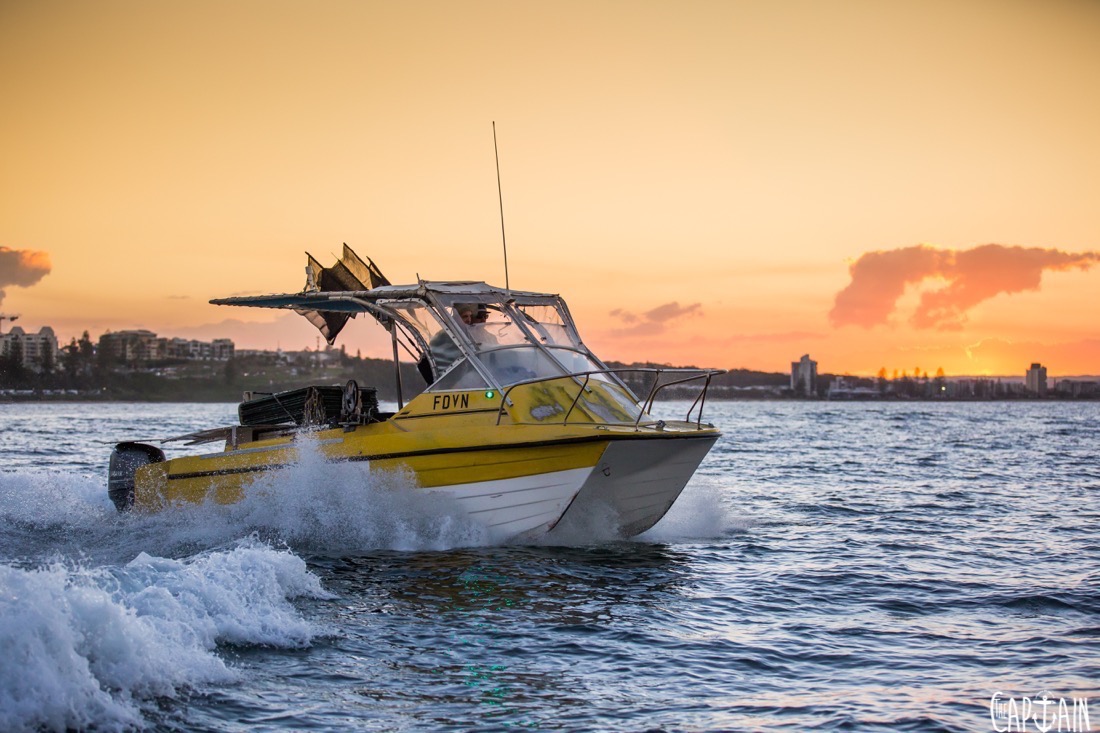

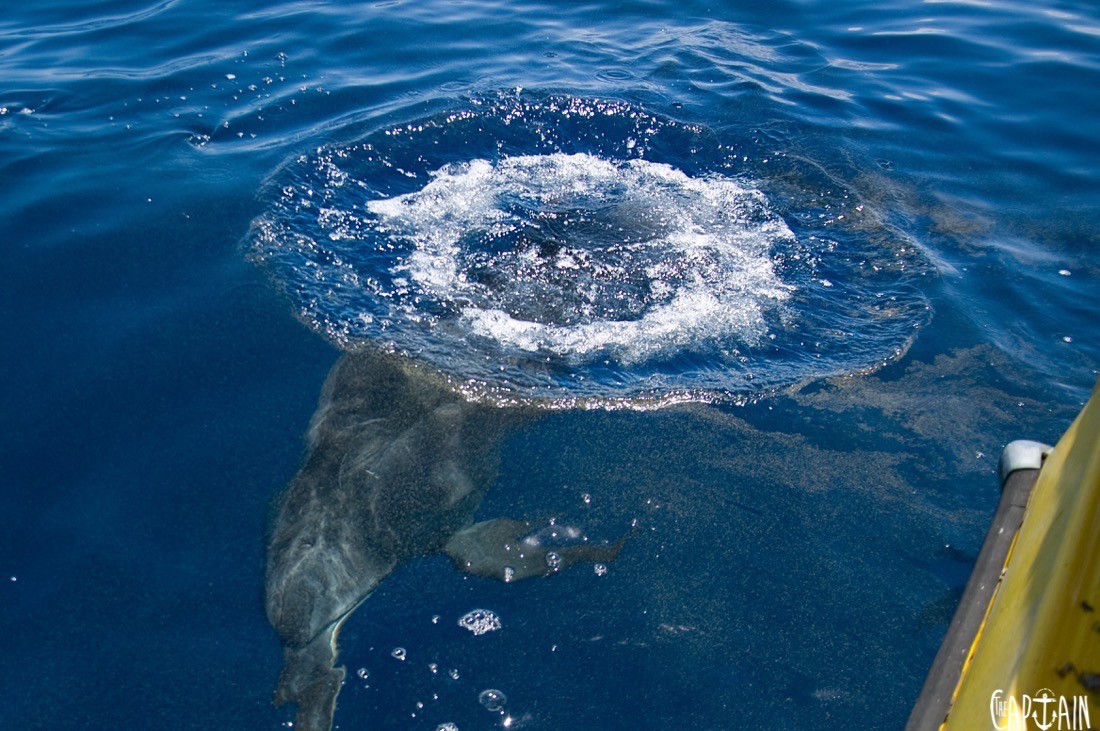
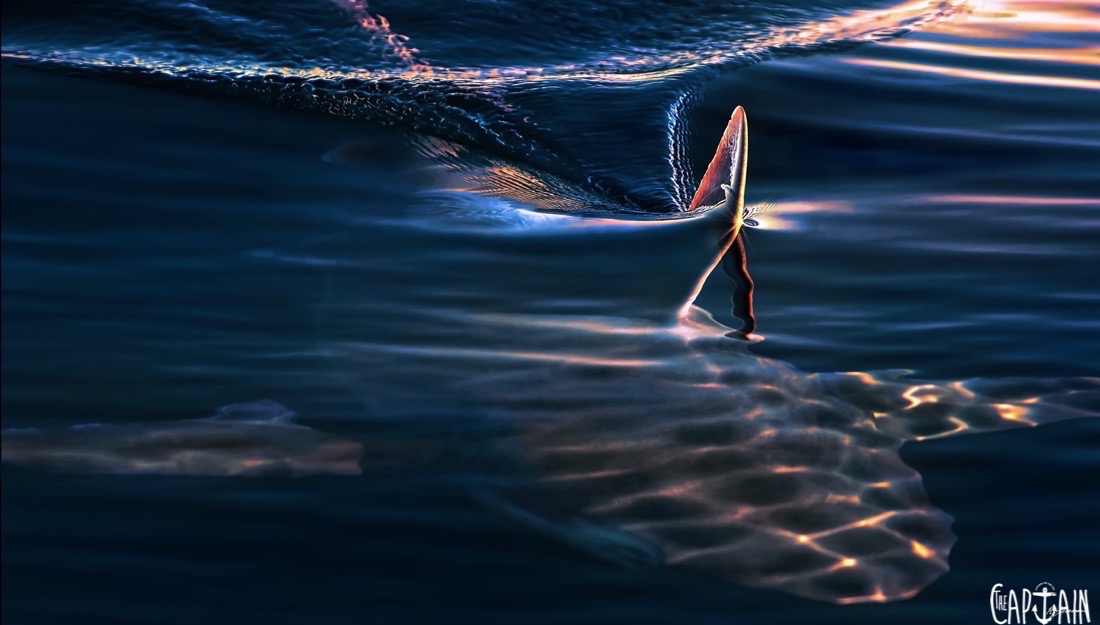
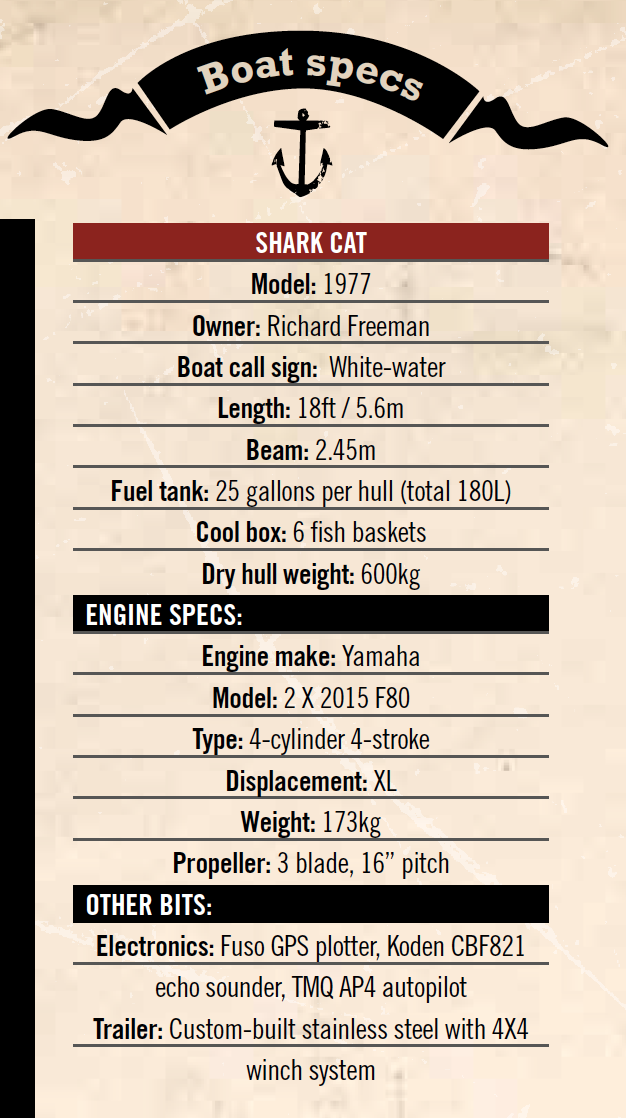
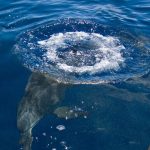

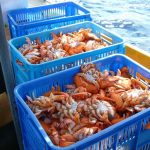
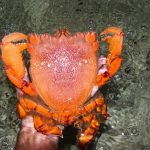
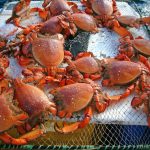
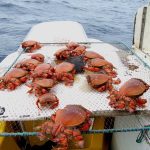
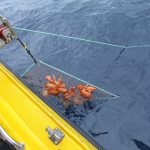
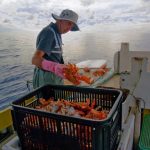
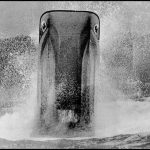
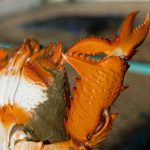
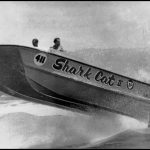
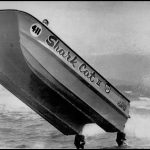
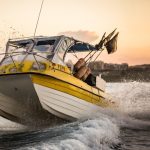
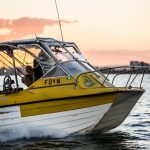
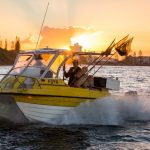
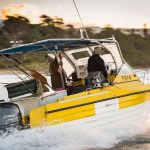
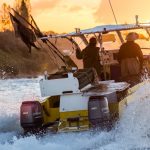
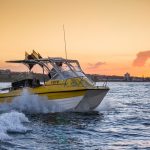
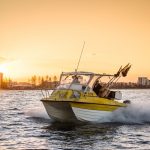
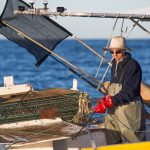
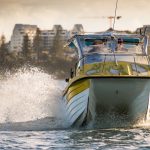
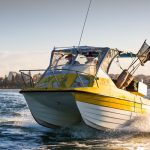
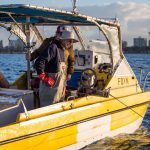
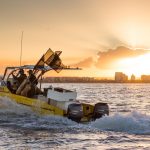
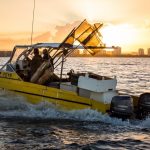
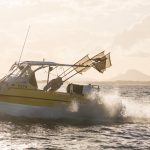
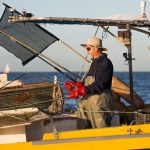
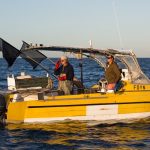
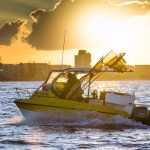
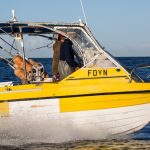
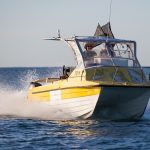
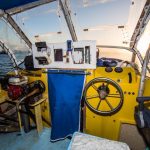
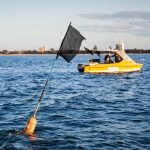

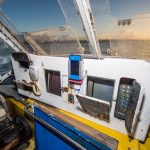
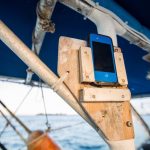
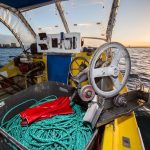
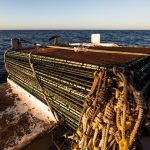
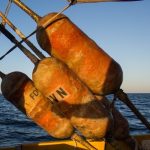
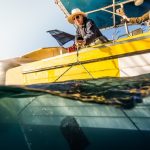
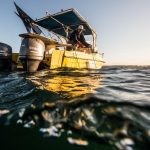
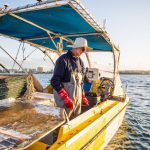
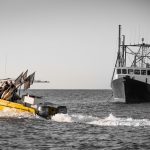
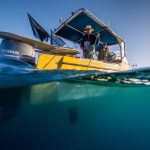
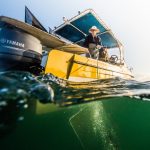
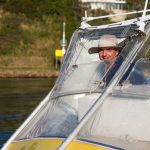
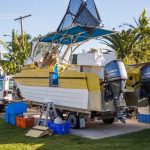
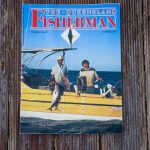
I own identical boat 18 ft Bruce Harris powered by twin 115 mercury four strokes awesome boat and everyone that comes out comments on how stable it is I will own it until I’m no longer able to fish then it’s the boys toy
hi richard fantastic to see you here telling your story
we should start a place on face book were people with shark cats can join and talk about there problems and issues that they have with the shark cats
because that is no place were you can get help from people that have a shark cat